Android TV ma ekranową klawiaturę programową o nazwie Gboard. Klawiatura obsługuje szeroką gamę funkcji, w tym zamianę mowy na tekst (STT), która pozwala użytkownicy zabierają głos, a mowa jest automatycznie tłumaczona na tekst. Ta funkcja działa w Gboard, więc nie musisz prosić o dźwięk. uprawnień ani wykonywania jakichkolwiek specjalnych czynności w aplikacji.
Metody wprowadzania
Możesz określić typ metody przesyłania. na Androida TV – dokładnie tak samo jak na urządzeniach mobilnych. Gboard na Androida TV obsługuje mniejszy zestaw typów urządzeń wejściowych, pokazanych tutaj następujące dane:
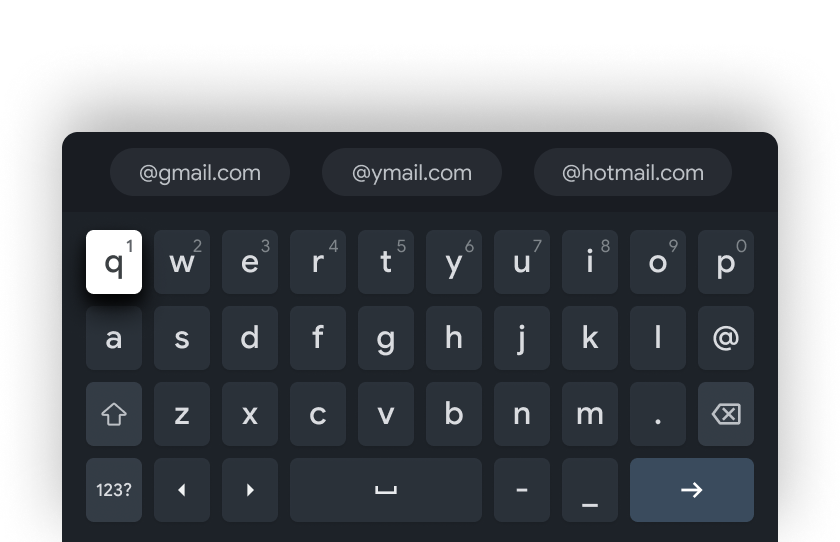
|
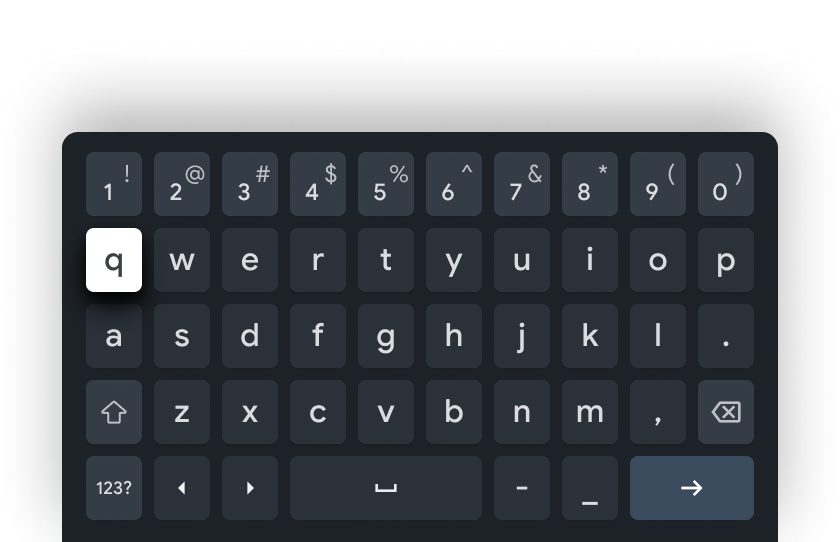
|
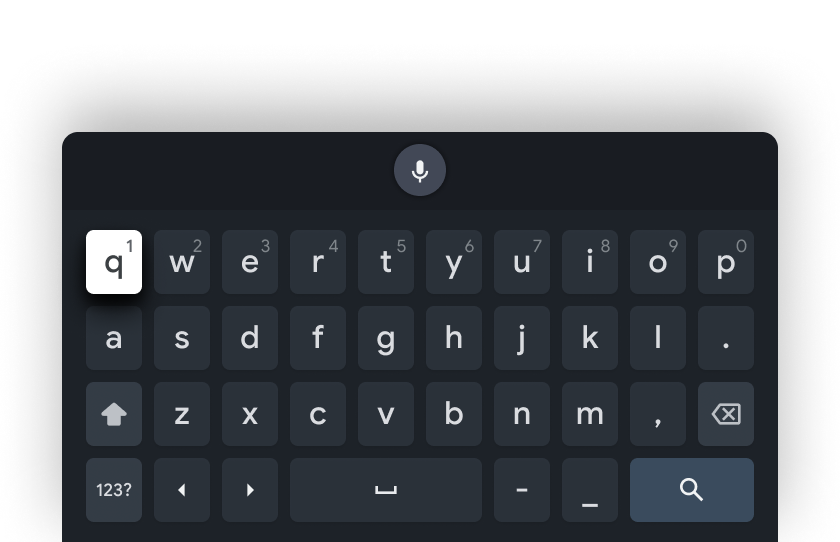
|
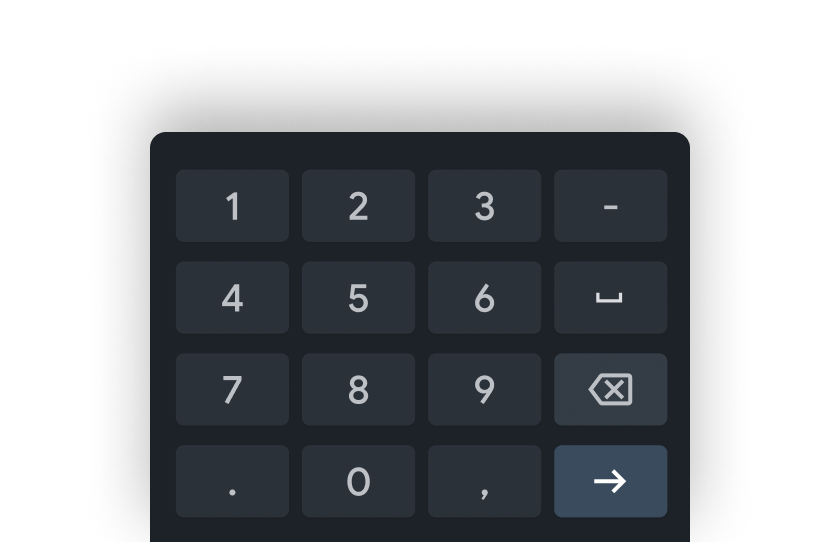
|
Możesz określić co najmniej 1 typ danych wejściowych w zależności od zastosowania tych kwestii. Gboard automatycznie określa najlepszy układ na podstawie danych wejściowych określone przez Ciebie typy i obsługiwane przez nie układy.
Miejsce docelowe
Ważną różnicą w Gboard na Androida TV jest możliwość określenia, gdzie: należy umieścić klawiaturę. Wcześniej klawiatura zakrywała dolną część ekranu. od krawędzi do krawędzi ekranu, ale aktualizacja Gboard pozwala unosząc się w powietrzu. Możesz określić, w którym miejscu ma się znajdować klawiatura: w lewo, w prawo lub na środku. Domyślna pozycja to środek.
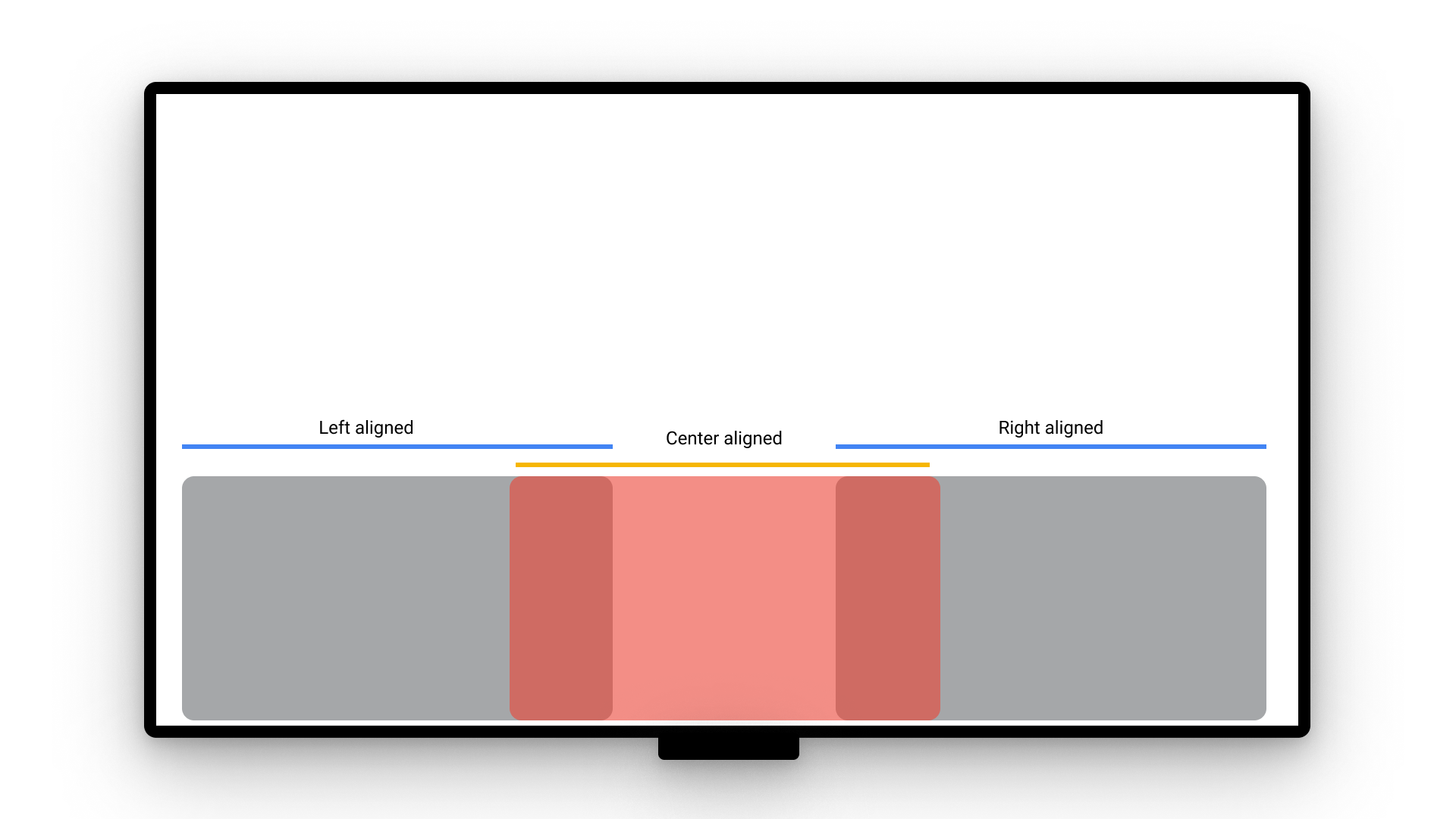
Aby sterować wyrównaniem, ustaw wartość w zakresie privateImeOptions dla parametru
horizontalAlignment Opcje dla opcji horizontalAlignment są domyślne
center, left i right.
Widać to w tym przykładzie:
<EditText android:layout_width="match_parent" android:layout_height="wrap_content" android:imeOptions="actionNext" android:privateImeOptions="horizontalAlignment=right">
W tym przykładzie klawiatura jest umieszczona w prawym dolnym rogu, co dobrze działa. gdy pola do wprowadzania danych są wyrównane po prawej stronie:
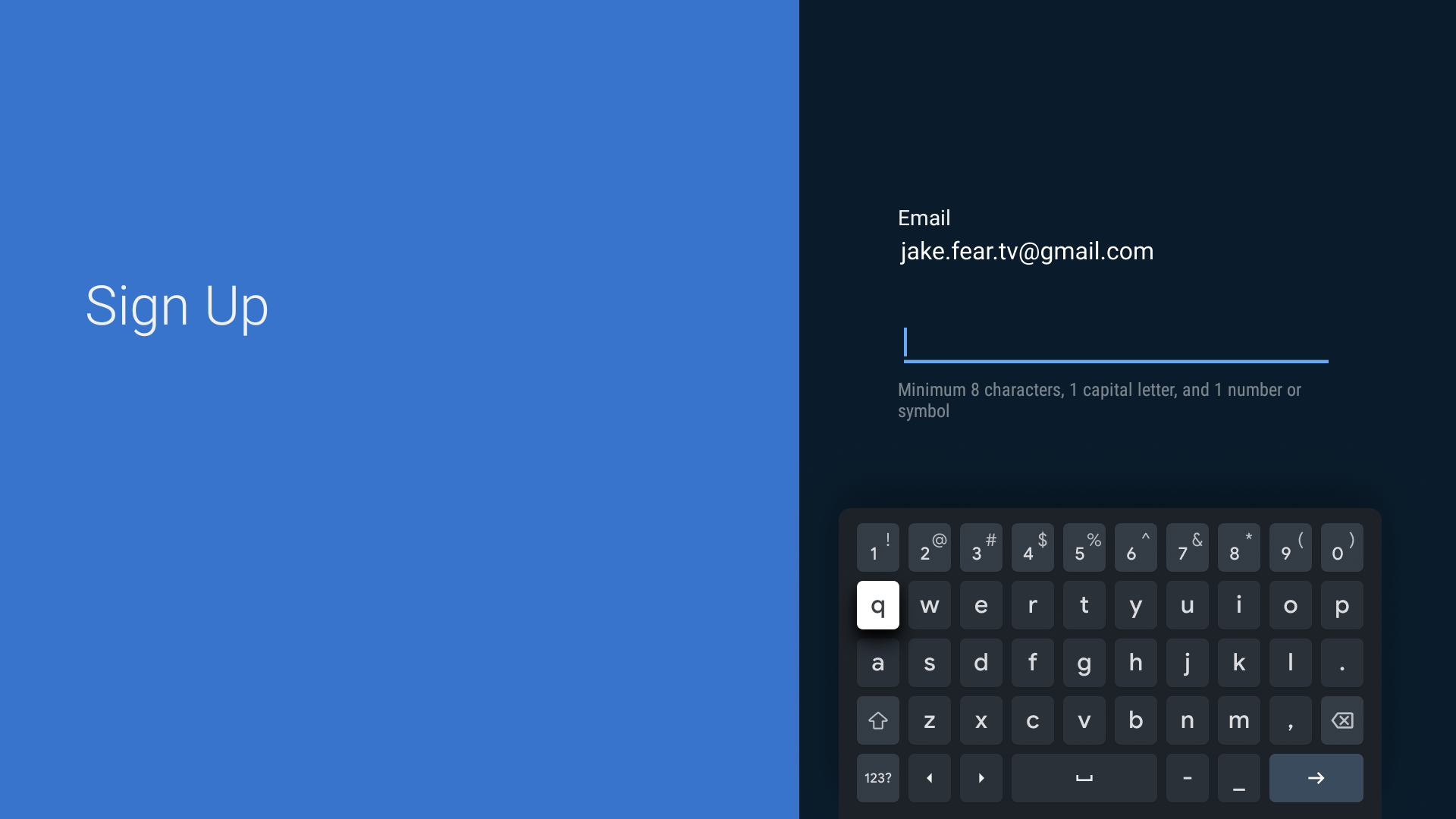
Obsługiwane języki
Gboard na Androida TV obsługuje wiele różnych języków. Lista języków obejmuje następujące elementy:
- angielski – USA
- angielski – Australia
- angielski – Kanada
- angielski – Wielka Brytania
- afrikaans
- albański
- arabski
- bengalski
- bułgarski,
- birmański
- chiński – Hongkong;
- chiński (uproszczony)
- chiński – tradycyjny
- chorwacki
- czeski
- duński
- niderlandzki – Belgia
- niderlandzki – Holandii
- estoński
- perski
- filipiński
- fiński
- Francuski
- francuski – Belgia,
- francuski – Kanada.
- francuski – Szwajcaria;
- niemiecki
- niemiecki – Austria.
- niemiecki – Belgia.
- niemiecki – Szwajcaria;
- grecki
- hebrajski
- hindi
- hindi – transliteracja.
- węgierski
- Muzyka indonezyjska
- irlandzki
- włoski
- włoski – Szwajcaria;
- japoński – Japonia;
- koreański
- litewski;
- macedoński,
- malajski
- norweski – Bokmål
- O'zbek
- polski
- portugalski
- pendżabski
- rumuński
- rosyjski
- serbski
- słowacki
- słoweński
- hiszpański – Meksyk,
- hiszpański – Hiszpania;
- szwedzki
- tajski
- turecki
- ukraiński
- urdu
- wietnamski

